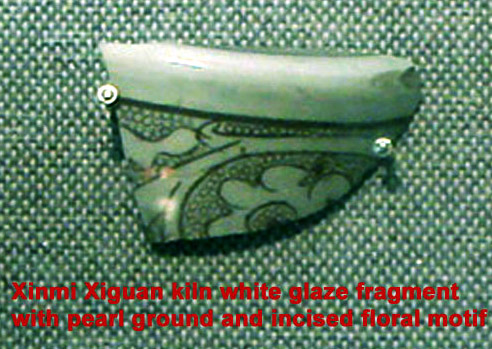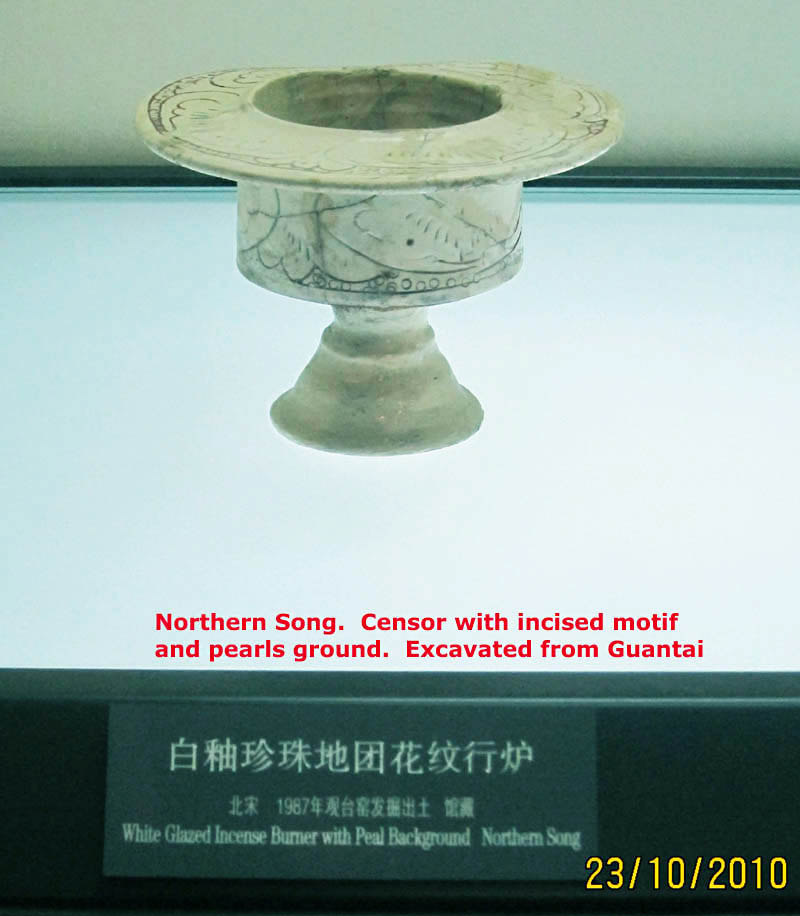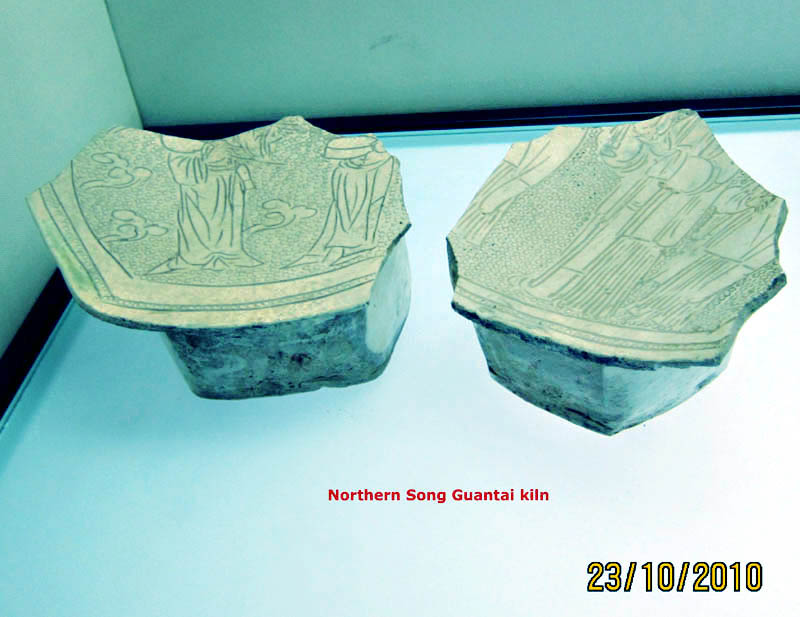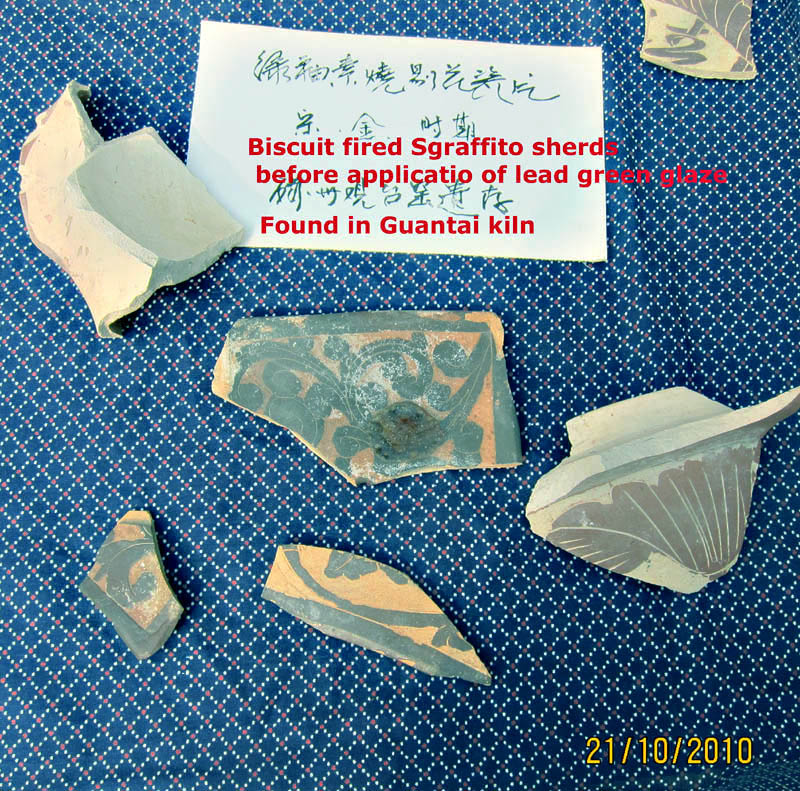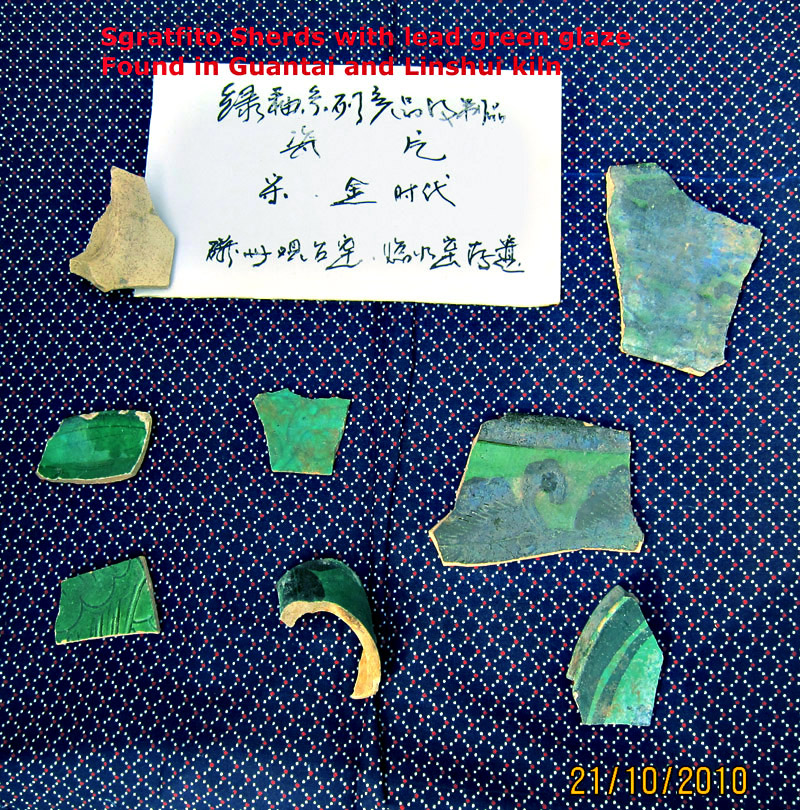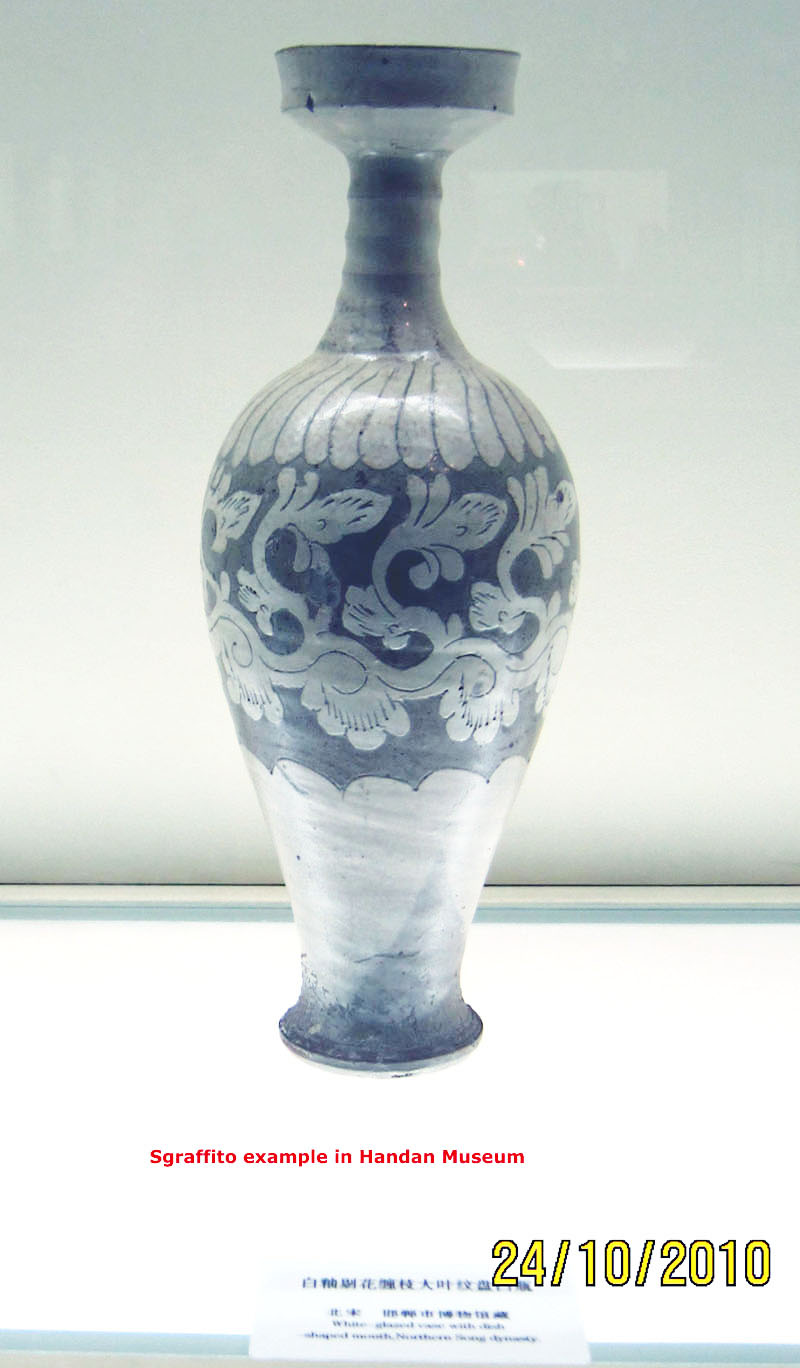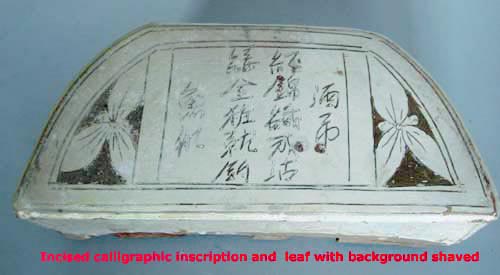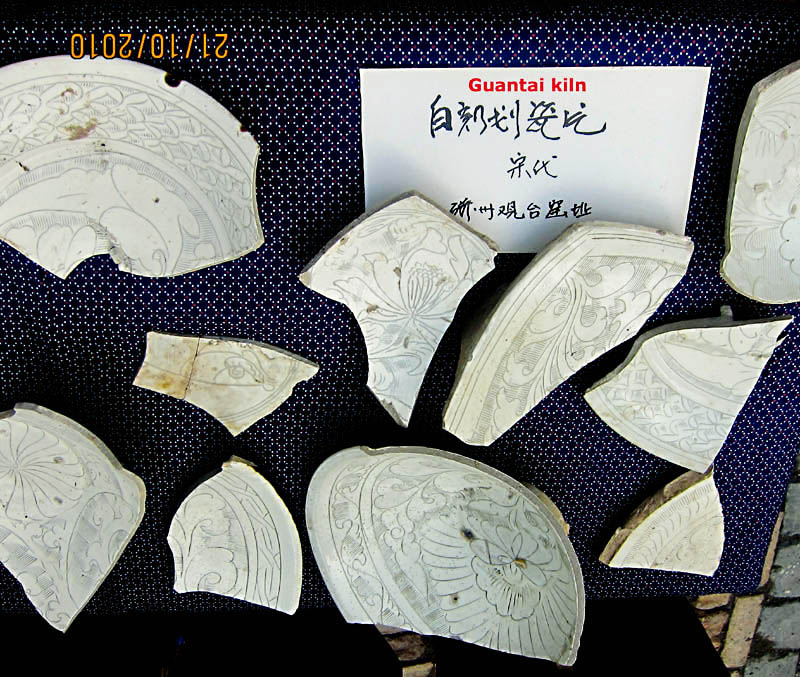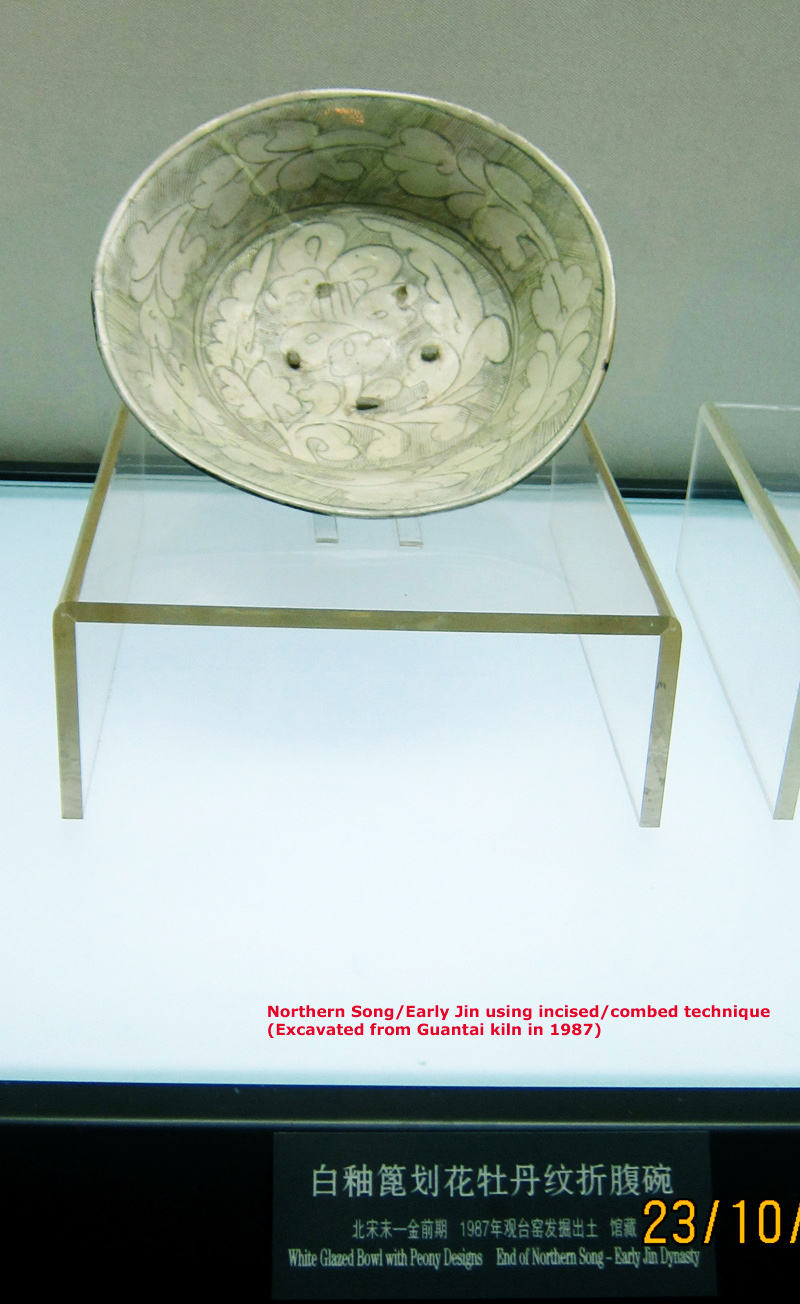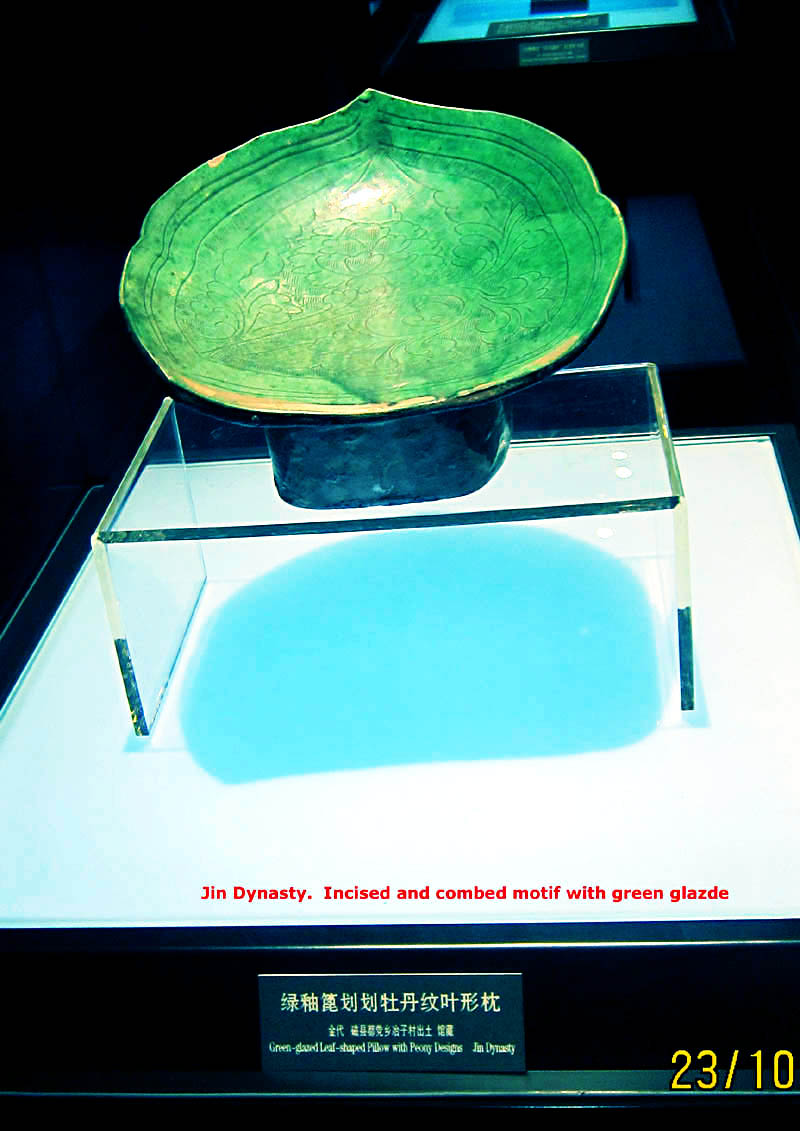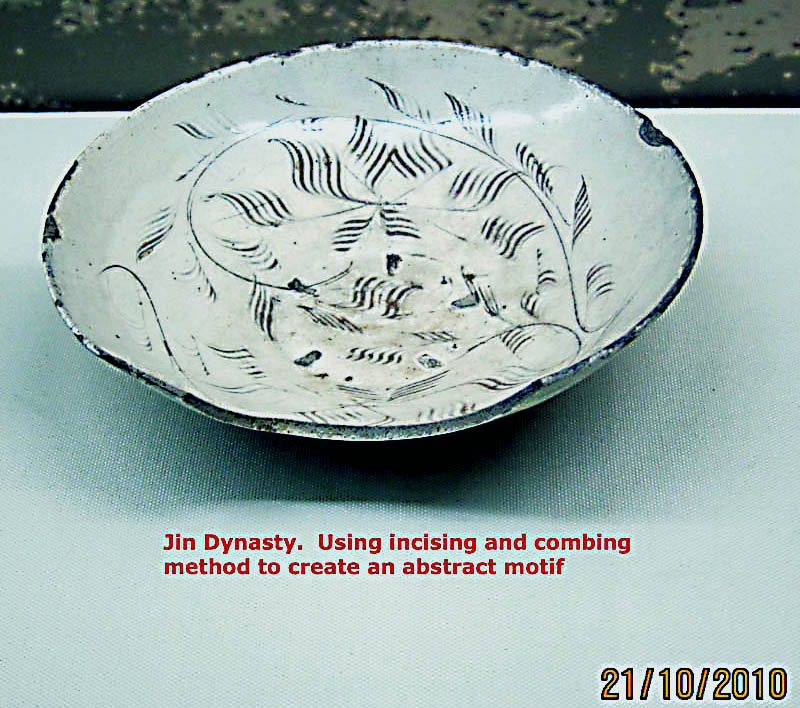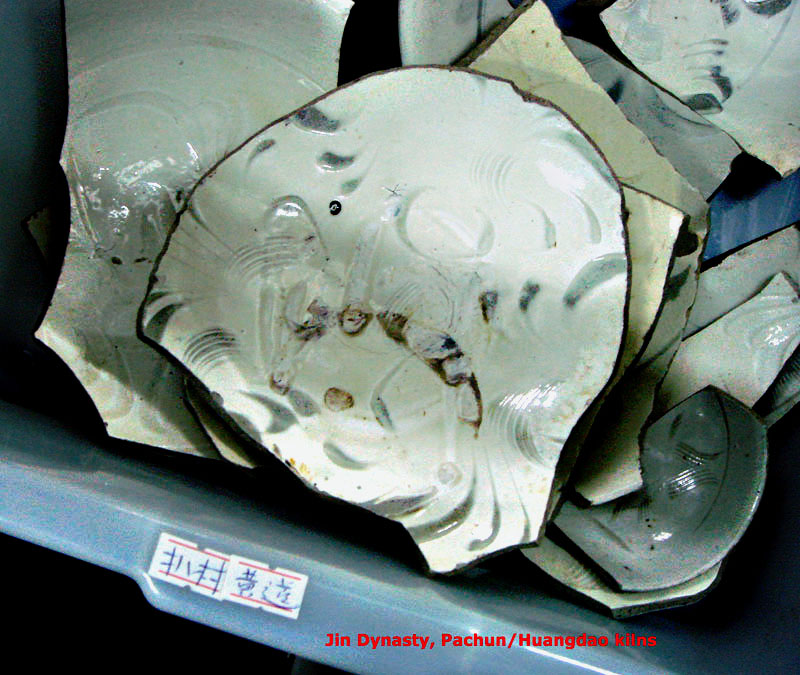Cizhou Wares
In 1918 A.D, some villagers from Julu (巨鹿)in Hebei discovered some ancient ceramics while digging a well during a drought spell. Antique dealers in Beijing got wind of the findings and the ceramics were subsequently brought to Beijing. It did not attract the interest of Chinese collectors as they were deemed to be unrefined and coarse folk kiln wares. The pieces were however snapped up eagerly by foreign antique dealers . Over the period from 1918 to 1919, many more pieces were recovered in Julu and sent to Beijing antique market. It was estimated at least half of them were now in Japan. In 1920, Tianjin Museum sent a team to Julu to carry out investigation. They recovered a stone tablet entitled '三明寺妙音殿记" which mentioned a davastating flood that engulfed Julu in the second year of Northern Song Daguan (大观). The artifacts recovered were all buried during this 1108 A.D flood. In fact, the team also discovered some residential sites which showed how some of those artifacts were actually displayed then. The artifacts recovered by the team were subsequently published in a book called "巨鹿宋器丛录“, ie a record of Julu Song wares. Among the vessels, there were some with inscription in ink such as a white glaze washer and a brown glaze box, both with a date of Daguan second year, and a carved/incised motif pillow with date of Chongning "崇宁“ seventh year (1092 A.D).
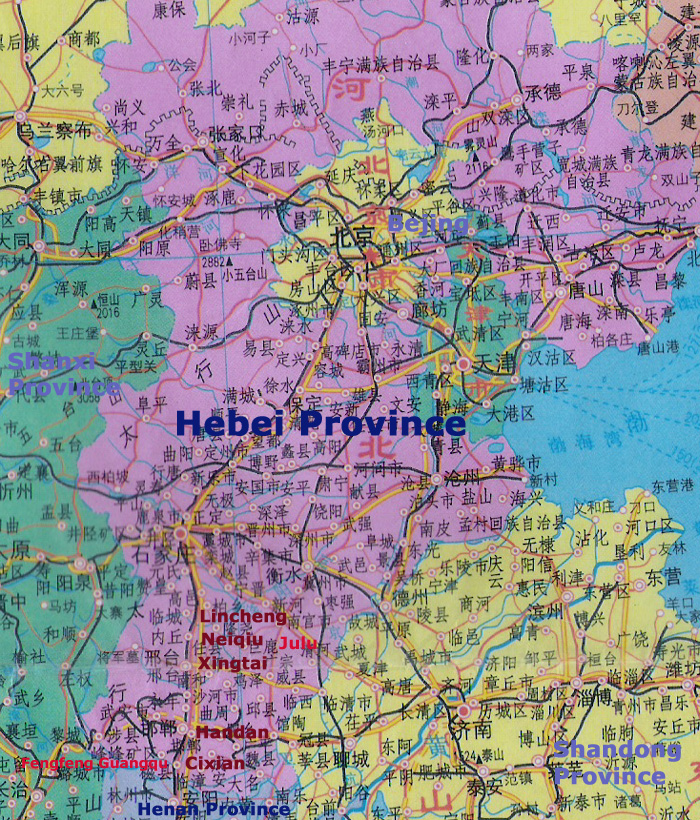
The earliest ancient text which commented about Cizhou wares was Ming period (曹昭) Cao Zhao's Ge Gu Yaolun ( 格古要论). He wrote that the good ones are similar to Ding ware but without tear marks. There were also those with incised or iron rust colour painted motifs. The ancient texts were vague and did not give a clear picture of the types of Cizhou wares which were made before Ming period. Hobson was the first to identify those wares found in Julu as wares made in ancient Cizhou and suggested the term Cizhou type wares to classify wares that share common key features. The typical cizhou ware has a milky white glaze. It utilises one of the following decorative techniques: incised, incised/combed motif , sgraffito motif which involved shaving away the slip outside the incised motif to create an embossed or paper-cut effect and thirdly iron black/brown painted or overglazed enamelled red/green/yellow motifs. Some of the wares were covered with a green or torquoise colour glaze. There is also the sancai type which utilised low fired lead glaze white, green and yellow colour.
Since the 1950s, Chinese archaeologists have carried out surveys in Cixian and discovered important Cizhou wares production sites in Guantai (覌台) , Yezhi Cun (冶子村)and Dong Aikou (东艾口)which were located near the Zhang river (漳河). Guantai kilns started production from the 5 Dynasties and ceased by end of Yuan period as a result of constant flooding in that area. The site were were subsequently used as farm lands. The kilns were therefore more well-preserved and facilitated subsequent excavations. Guantai was excavated scientifically and detailed records of the 3rd excavation in 1987 was published. Most of our understanding of the chronological stages of production of Cizhou wares was based on that particular archaeological report.
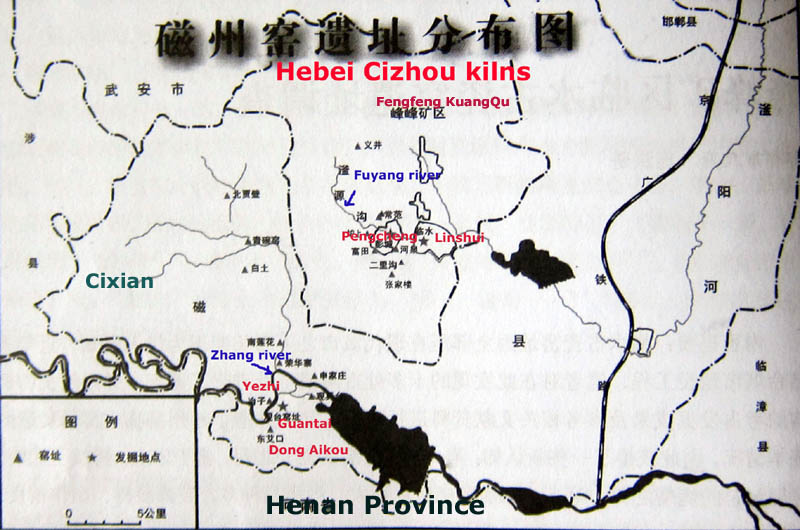
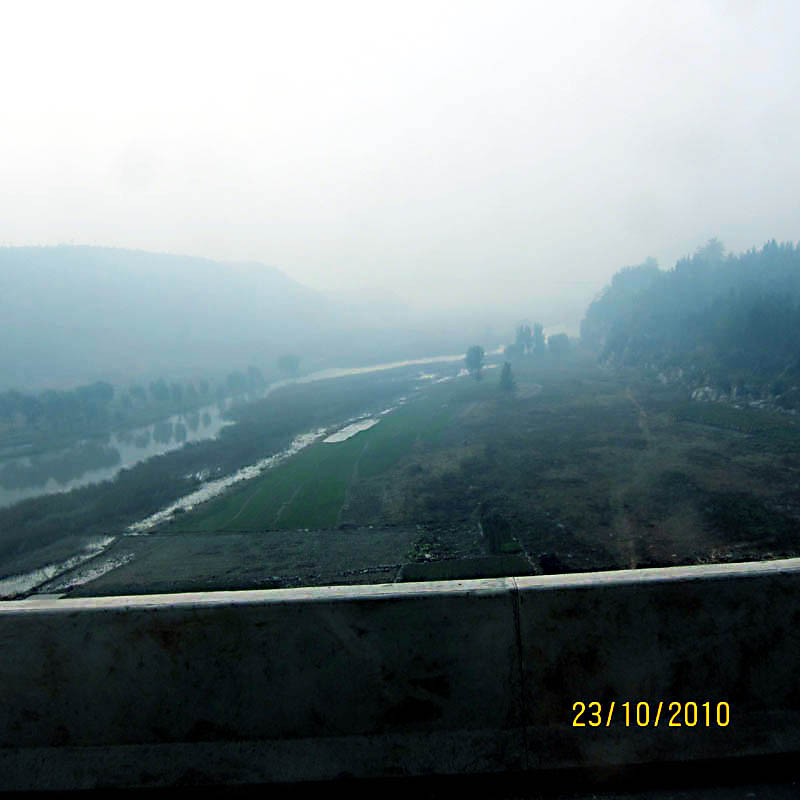
Zhang river near Guantai
Pengcheng (彭城) in present day Fengfeng Kuangqu (峰峰矿区) is identified as another important Cizhou wares production site. Pencheng was davastated by a major earthquake in 1830 A.D and was rebuilt after the quake. As a result, ancients kilns were buried below subsequently rebuilt buildings which made excavations very difficult. However, in 1999 a small scale archaeological excavation was carried out in conjunction with repair to Fuxi road. From the excavation, it showed that Pencheng kilns was also in operation from Northern Song period. But the excavation also revealed that its production during the Yuan period was hugh as compared with the earlier period. Pengcheng became the most important production site in Northern China from the Ming period onward and has continued to produce ceramics till today. Products from Pengcheng could be transported by the Fuyang river to Tianjin and exported overseas. Some of the Pengcheng Cizhou products could be found in the National Museum in Indonesia.
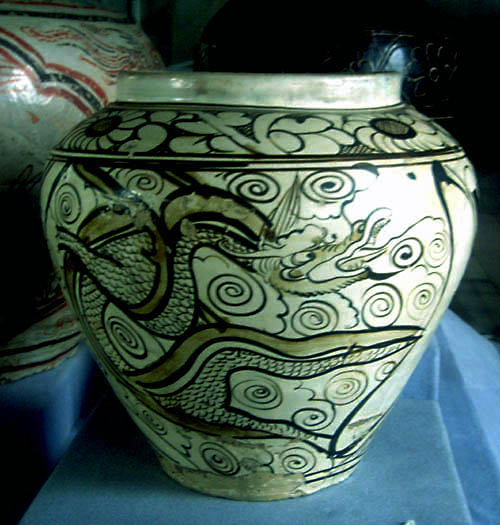
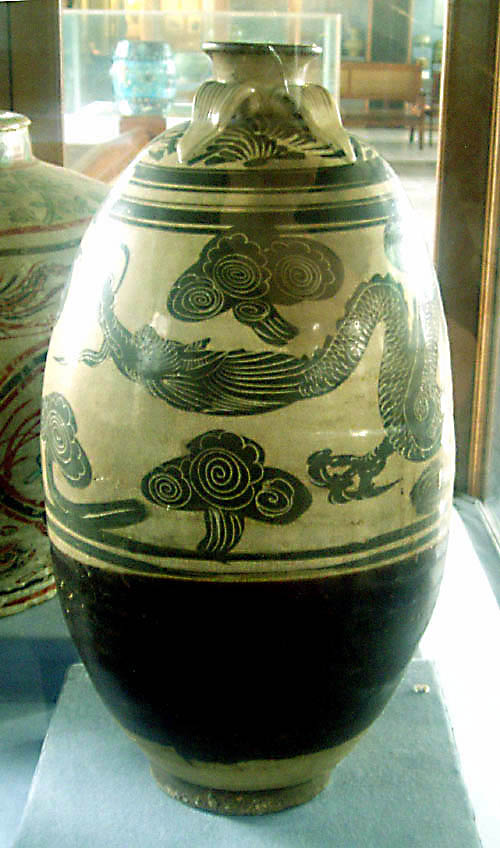
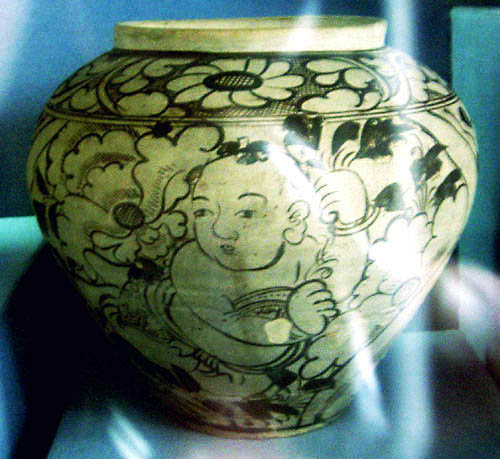
Pengcheng cizhou wares in Indonesia National Museum in Jakarta
Recent redevelopment programs in the Fengfeng Kuangqu region have exposed many of the ancient kilns. Although scientific excavations were not carried out, the archaeologists were able to carry out some studies of the sites and collected some of the sherds and kiln furnitures. It further confirmed that Linshui (临水) which is separated by Pengcheng by the Fuyang river (滏阳河) was another very important Cizhou ware production site. The findings suggested that it could have started production from the Norhern Dynasties period and continued till Ming period.
Both Guantai situated near Zhang river and Pengcheng near Fuyang river were within the ancient Cizhou territory. Those are two important kiln centre but there are also many other cizhou kilns in this region situated near the two rivers mentioned.
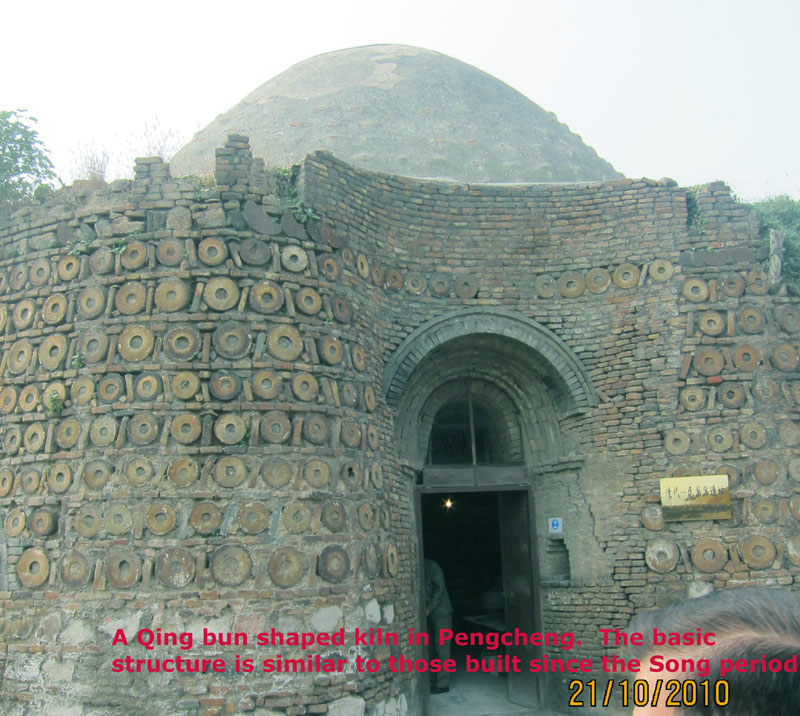
View of Pencheng kiln during the 1940s.
Cizhou wares is a distinctive group of ceramics vessels (in the west they are usually termed stoneware) introduced during Northern Song period. It gained immense popularity during the Song/Yuan period and was a mainstream utilitarian wares for common folks in Northern China. It continued to be produced during the Ming/Qing period despite stiff competition from the Jingdezhen kilns. It is indeed amazing how the potters had overcome the inferiority of the raw materials and came out with so many imaginative decorative techniques to produce so many aesthetically beautiful and undeniably artworks.
Besides, kilns in Hebei, there are numerous other kilns located in Henan (some famous ones such as Xiuwu Dangyangyu [修武当阳峪), Tangyin Hebiji (汤阴鹤壁集), Yuzhou Pacun (禹州扒村), Dengfeng (登封)], Shanxi (陕西) [(Yaozhou (耀洲)], Ningxia (宁夏)[Lingwu (灵武窑)],Inner Mongolia [chifeng (赤峰)], Shanxi (山西)[Jiexiu (介休窑), Pingding (平定窑)], Shandong, Anhui, Jiangxi [Jizhou (吉洲)] and Guandong which produced similar wares. Despite some local differences in terms of decorative style and materials used to form the vessels, they share unmistakable distinct common features to be classified under the generic term, Cizhou type wares. For more on ceramics from Henan, please read Henan Ceramics.
Cizhou Wares' Decorative techniques
Incised/combed /shaved (sgraffito) motif
Duing the Northern song phase, the cizhou potters utilised a variety of decorative techniques such as incising, carving,shaving, combing and stamping. Combing was introduced later during the late Northern Song period.
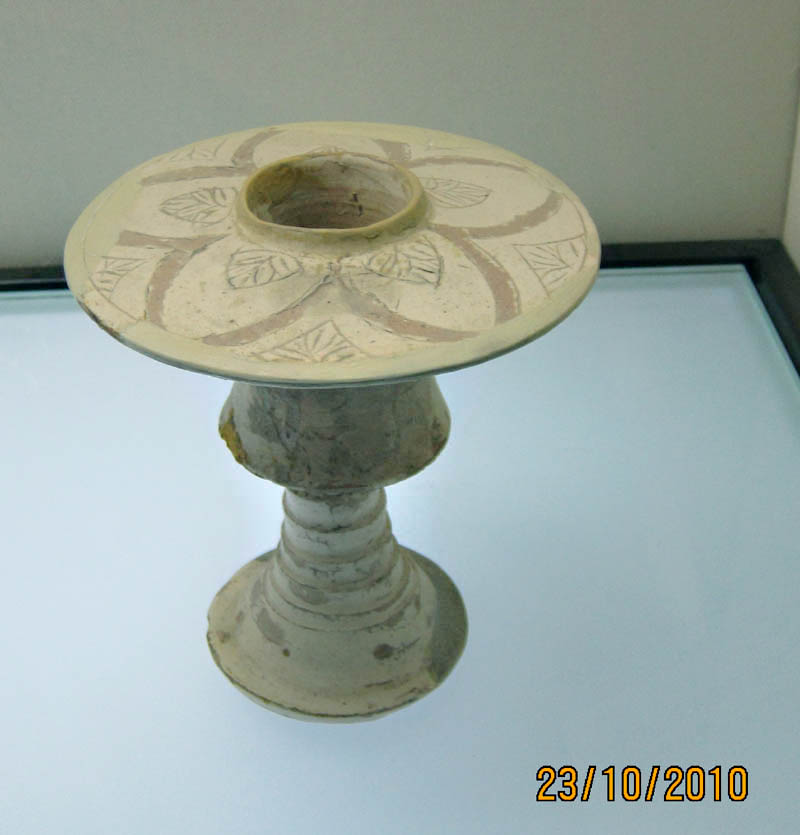
Northern Song incense burner using carving and incised technques. Excavated from Guangai KIln
The most popular and earliest type consisted of incised motif with stamped pearls-like ground. It could be traced back to those produced by Henan Xinmi Xiguan (新密西关窑) kiln probably as early as the late Tang period. During the Early Northern Song, the motifs consisted of mainly simple and sketchy floral motif.
